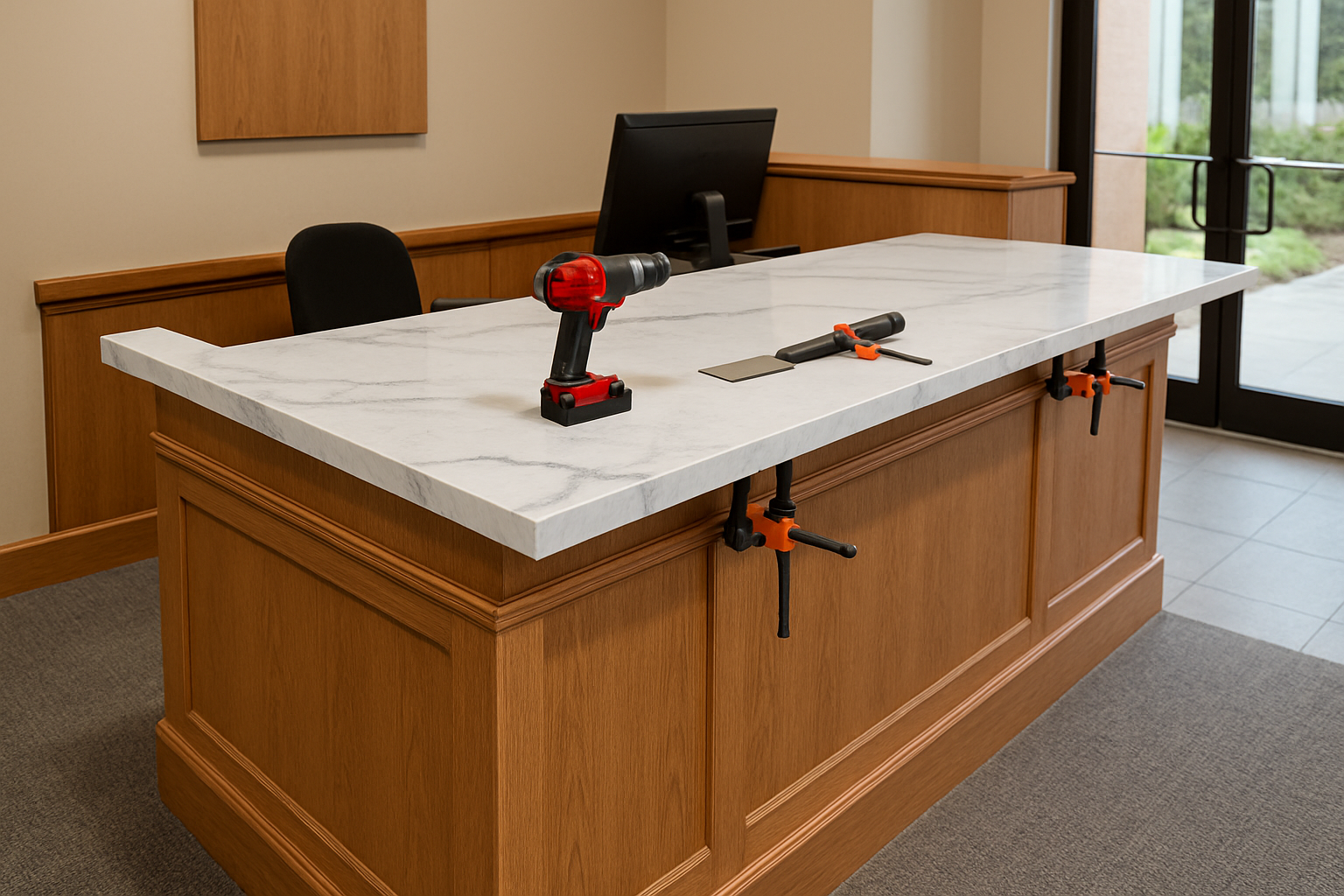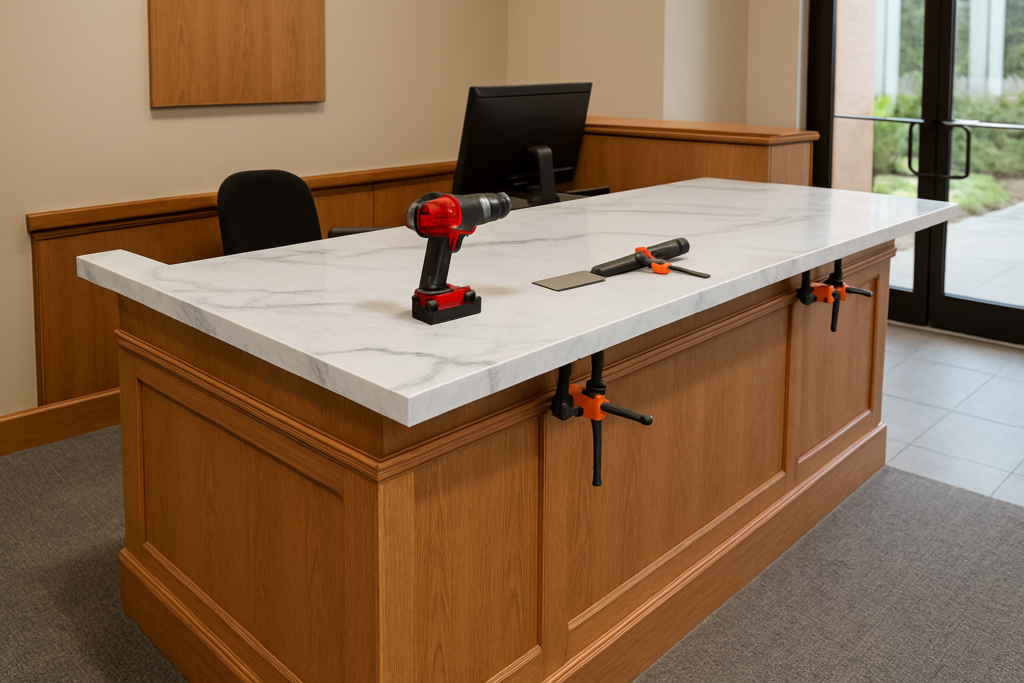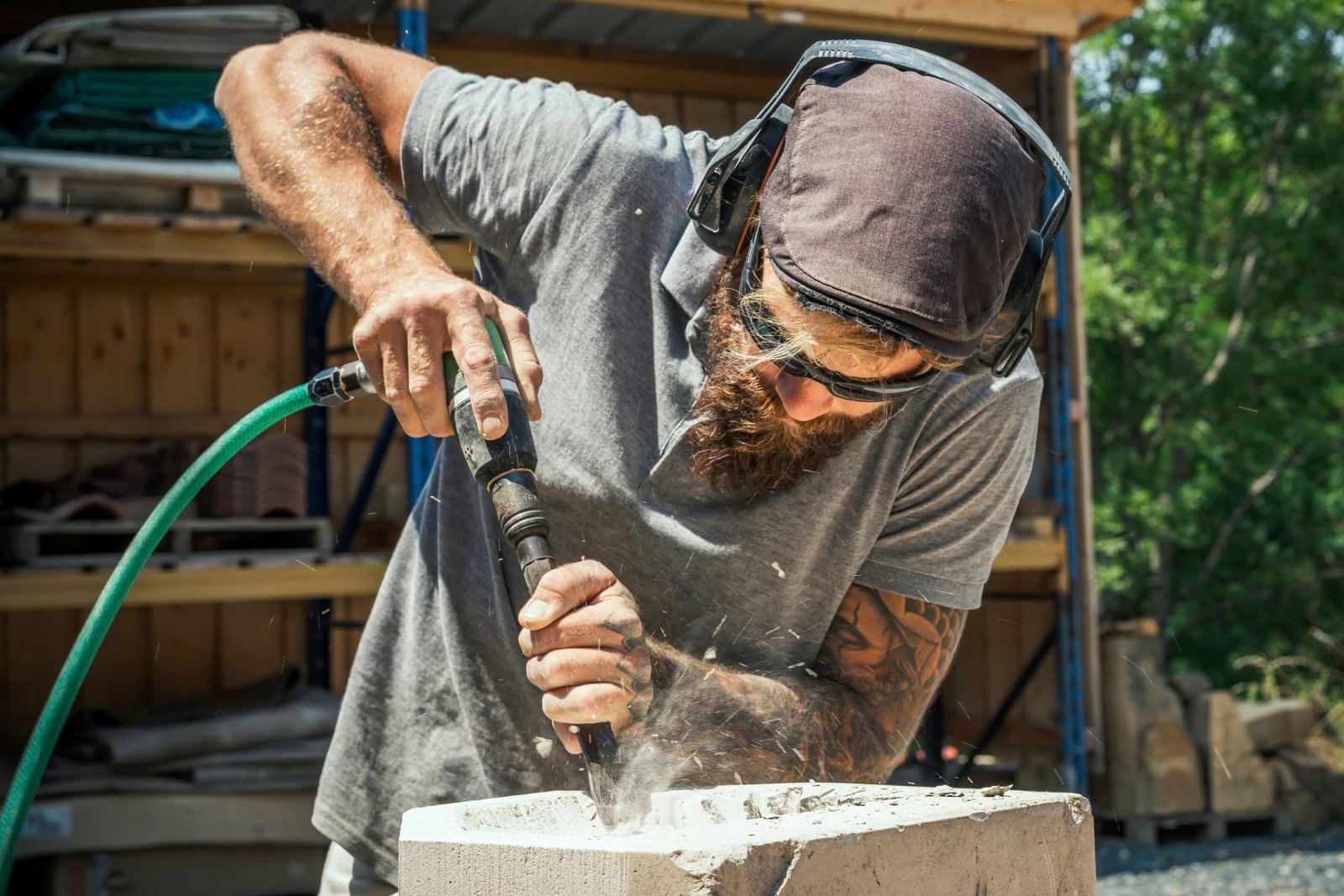
A new countertop installation can completely transform the look, feel, and function of your kitchen.
A new countertop installation can completely transform the look, feel, and function of your kitchen. But to get the most from your investment, it’s essential to follow best practices before, during, and after the process. Whether you’re working with granite, quartz, or another durable material, success depends on careful preparation, proper tools, skilled installation, and ongoing care.
In this guide, we share the best tips for ensuring a smooth, long-lasting, and visually stunning kitchen countertop installation. From choosing the right material to maintaining your surfaces post-installation, these tips will help you avoid common mistakes and maximize your results.

1. Start with the Right Material for Your Lifestyle
Not all countertops are created equal. Select a material that suits both your design preferences and how you use your kitchen daily.
Popular Materials:
- Granite countertop installation: Excellent for heat resistance and natural beauty.
- Quartz countertop installation: Durable, low-maintenance, and stain-resistant.
- Solid surface or laminate: Budget-friendly but may lack long-term resilience.
Ask yourself:
- Do you cook often?
- Is low maintenance important?
- Do you want a natural or engineered look?
Learn how material choice affects longevity in How Does Countertop Installation Result in Long-Lasting Countertop Materials?
2. Measure Precisely with Digital Templating
Measurement is everything in kitchen countertop fitting. Professional installers use laser templating or digital measuring tools to capture precise layouts. Even a small miscalculation can lead to alignment issues or wasted material.
Pro Tip:
Don’t rely solely on manual measurements. Ask your installer if they use CAD-based templating for accuracy.
3. Reinforce Cabinets and Check Leveling
Before installing any countertop, ensure your base cabinets are:
- Level from all angles
- Structurally sound
- Properly anchored to the wall
This is especially critical in granite countertop installation, where the stone is heavy and needs solid support. Uneven cabinets can lead to cracks or gaps post-installation.
4. Choose an Edge Profile That Matches Your Kitchen Design
Edges affect both aesthetics and safety. Common edge profiles include:
- Eased (straight): Clean and modern
- Beveled: Transitional design
- Ogee: Traditional elegance
- Mitered edge: Creates the look of a thick slab
If you’re investing in granite countertops installed or a modern quartz countertop installation, the right edge can elevate the whole look.
5. Use the Right Tools for the Job
From cutting to polishing, countertop installation requires specific tools based on the material.
Essential tools include:
- Wet saw with diamond blade
- Seam setter and leveling system
- Vacuum lifters or clamps
- Epoxy for seamless joints
- Polishing pads and edge grinders
For a full list of necessary tools, check out What Tools Are Needed for Countertop Installation?
6. Seal Natural Stone Surfaces Immediately
If you choose granite, marble, or another porous material, sealing is non-negotiable. A proper seal:
- Protects against stains and moisture
- Makes cleaning easier
- Extends the surface lifespan
Pro Tip:
Use a high-quality penetrating sealer and follow manufacturer recommendations for reapplication (typically once every 1–2 years).
7. Account for Sink, Cooktop, and Backsplash Cutouts
Plan all cutouts during the templating phase. These include:
- Undermount sinks
- Cooktop openings
- Faucet holes
- Pop-up outlets
- Built-in drain grooves
Accurate cutouts are critical for a professional finish and prevent later damage or misalignment.
8. Invest in Professional Installation for Seamless Results
DIY might be tempting, but a flawless finish often requires experienced hands—especially for:
- Seam joining
- Bookmatched patterns
- Waterfall edges
- Large-format slabs
Instead of taking on the cost and complexity yourself, search for “countertop installation near me” and review portfolios of previous work.
9. Understand the Full Countertop Installation Cost
Your budget should include:
| Item | Estimated Cost |
|---|---|
| Material (granite/quartz) | $60 – $150/sq. ft. |
| Labor | $30 – $90/hour |
| Old countertop removal | $100 – $500 |
| Edge upgrades | $10 – $40/linear foot |
| Sink/faucet cutouts | $100 – $300 each |
Ask your contractor for an itemized quote to avoid surprises.
10. Maintain Your Countertop Post-Installation
Your job isn’t done once the countertop is installed. Proper care ensures lasting beauty and performance.
Maintenance tips:
- Clean with a pH-neutral cleaner
- Avoid abrasive pads or bleach
- Use trivets and cutting boards
- Re-seal granite annually
- Wipe up spills promptly (especially wine, oil, and citrus)
11. Know When to Repair or Replace
If your current surface is cracked, stained, or out of style, consider:
- Countertop repair for minor chips and damage
- Countertop resurfacing for aesthetic updates on a sound structure
- Countertop replacement if you’re redesigning your layout or upgrading material
Each option comes with different costs, timelines, and design flexibility.
Final Thoughts
A successful countertop installation is about more than just placing a slab on top of cabinets—it’s about planning, precision, materials, tools, and aftercare. Whether you’re upgrading with granite countertops installed for timeless beauty or opting for a sleek quartz countertop installation, the right approach ensures your investment pays off for years to come.
Follow these tips to avoid costly errors, increase durability, and create a space that’s both functional and beautiful.

